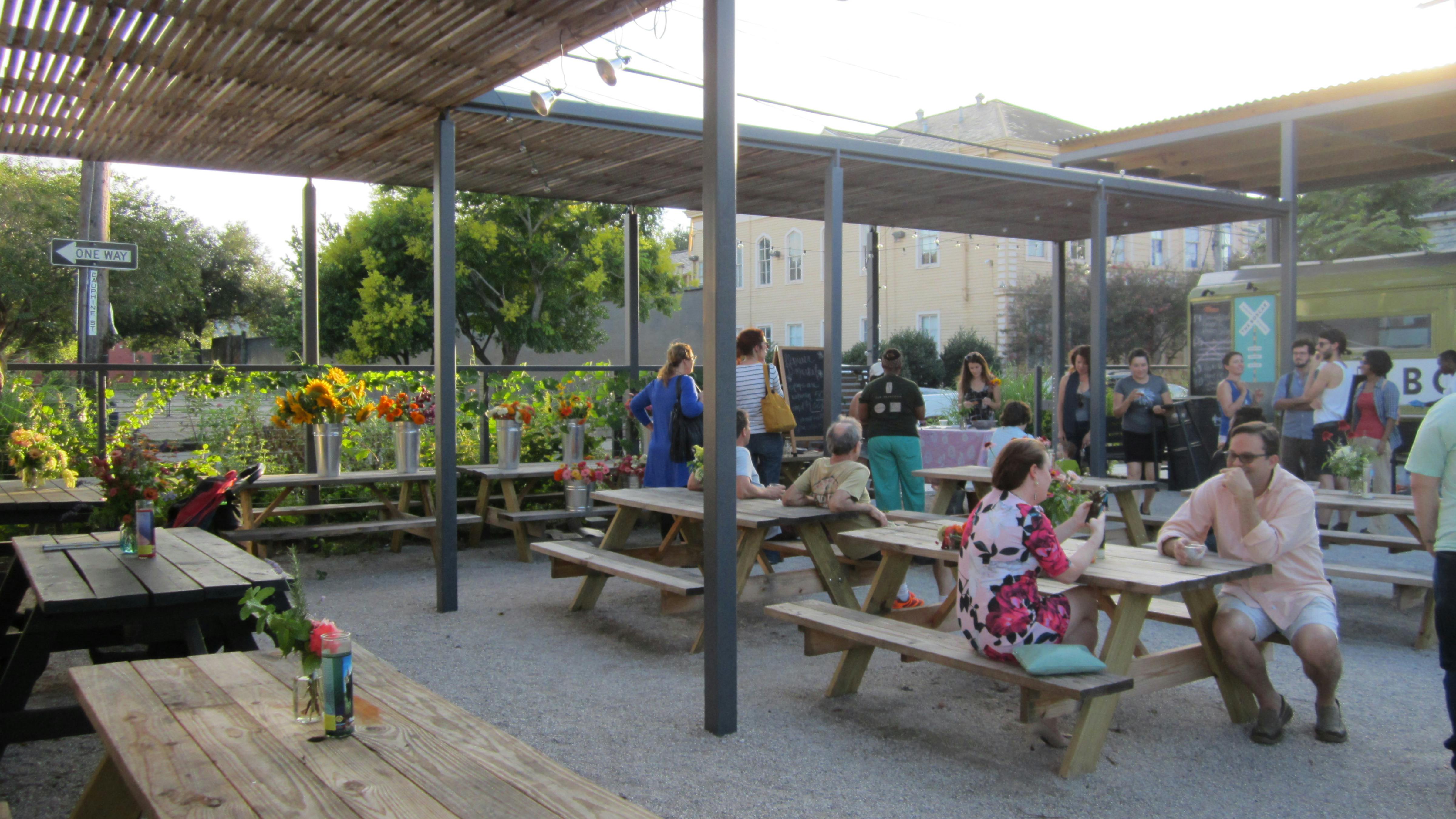New Orleans Reforestation Plan
Saving Our Urban Landscape (SOUL)
New Orleans, Louisiana
2022

Partners
Engagement Team
Traci Birch
Data
Quantum Spatial
CASA Systems
Awards
2023 ASLA Honor Award for Analysis and Planning
The City of New Orleans’ Plan for the 21st Century: New Orleans 2030 was the first document in recent history to recognize the city’s tree canopy as critical to New Orleans’ resilience. The Plan set a goal of a 50% tree canopy by 2030. New Orleans local nonprofit organization, Sustaining Our Urban Landscape (SOUL), learned about the need for baseline data to determine the city’s existing tree canopy coverage to inform future goals. This new data revealed the need for a more comprehensive plan to increase the New Orleans’ tree canopy and was a wake up call that activated SOUL to organize the development of a reforestation plan that was ambitious, yet realistic and achievable.
Trees are why you take that streetcar ride down St. Charles and spend your afternoon in City Park. Not only do they keep our streets cool, make our electricity bills lower, and help prevent flooding, but they’re also part of the magic of our city.
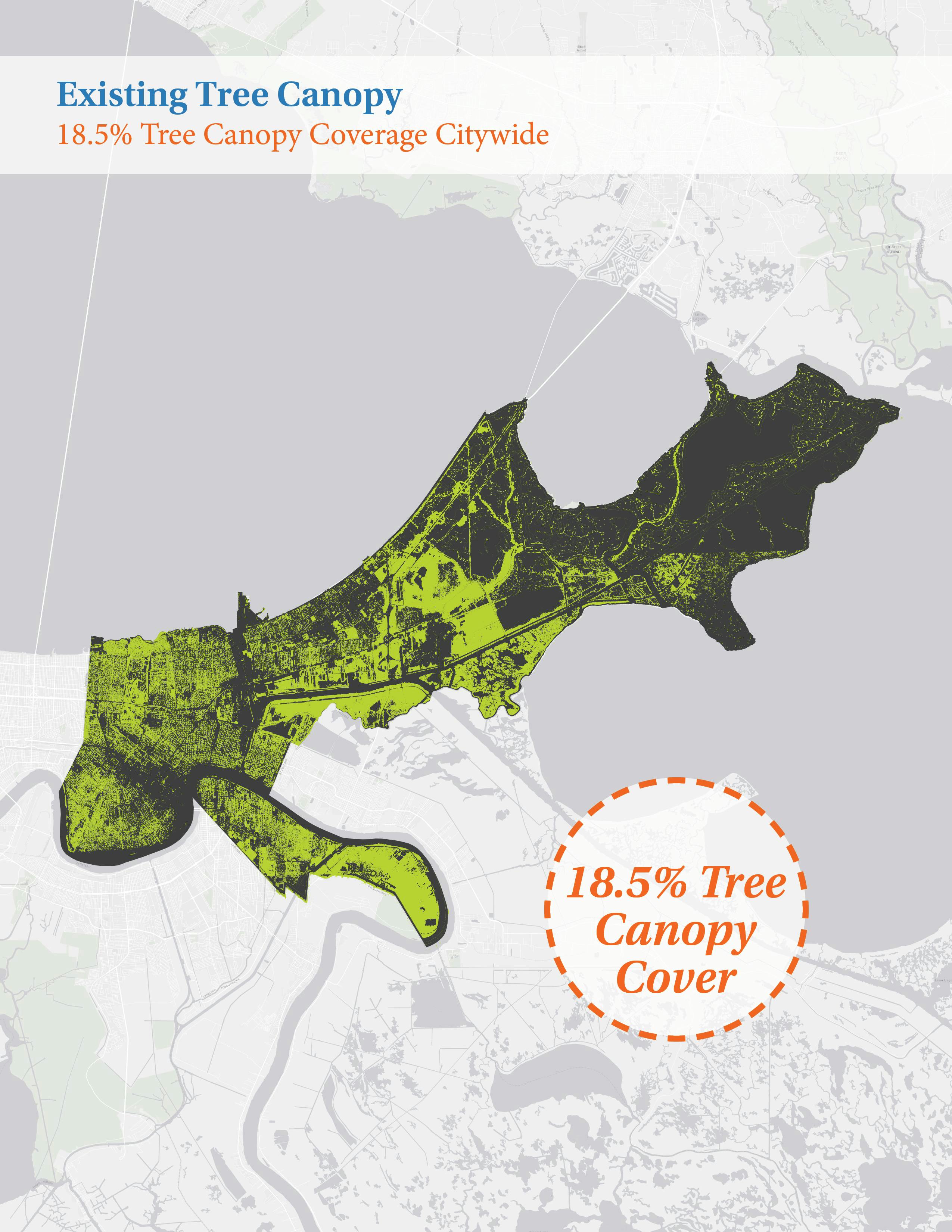
New Orleans is known for its trees. Grand, majestic Live Oaks, towering Cypress, and flowering Magnolias line the streets and provide shade for people and homes. However, the trees in New Orleans are disappearing, and they are not being replaced at the rate of loss. Over 200,000 trees were lost in the city in the aftermath of Hurricane Katrina. The canopy still has not recovered. New Orleans has the worst urban heat island effect in the United States—alongside Newark, New York City, Houston, and San Francisco—with an average temperature in the city that is about 9°F hotter than the surrounding rural or undeveloped land, while some areas of the city are upwards of 16°F hotter.
SOUL coordinated the Plan’s creation over two and a half years and engaged SMM to write the New Orleans Reforestation Plan. The team compiled the research, data and feedback gathered by SOUL into a plan that charts a path for a carefully budgeted, systematic campaign to regrow an equitable urban forest in New Orleans. Rather than set an overall canopy goal, which is a common approach to urban forestry plans, the New Orleans Reforestation Plan focuses on planting trees where communities need them the most. The report reflects the work and extensive input by a dedicated coalition of local stakeholders from intergovernmental agencies to professionals to citizens. The document provides a comprehensive vision and detailed plan for the restoration of the City’s urban forest over the course of the next 20-30 years.
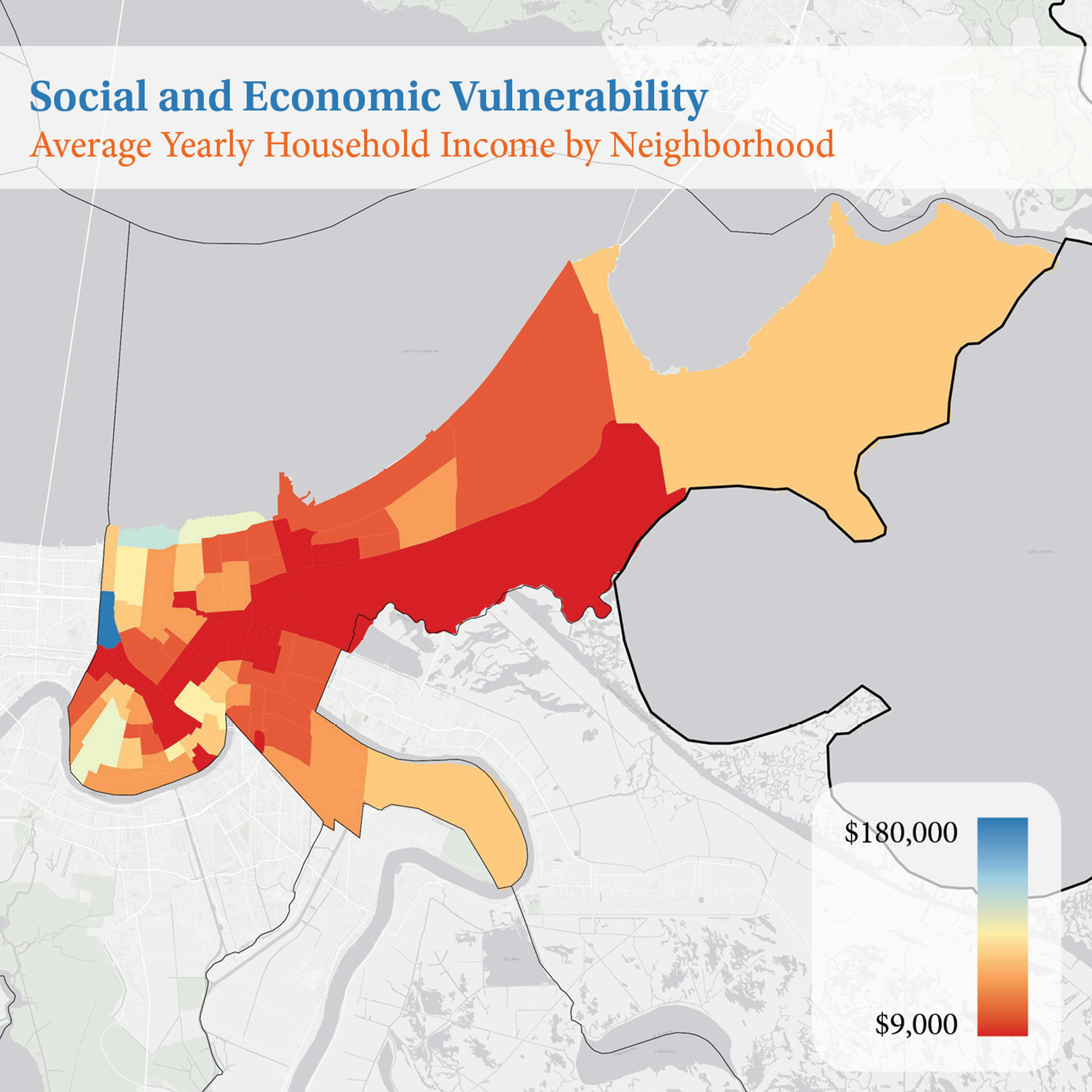
Many people in the city have limited access to private cars, reserve income to repair air conditioners if they fail, and other economic vulnerabilities that make the environmental challenges New Orleans faces more dire.
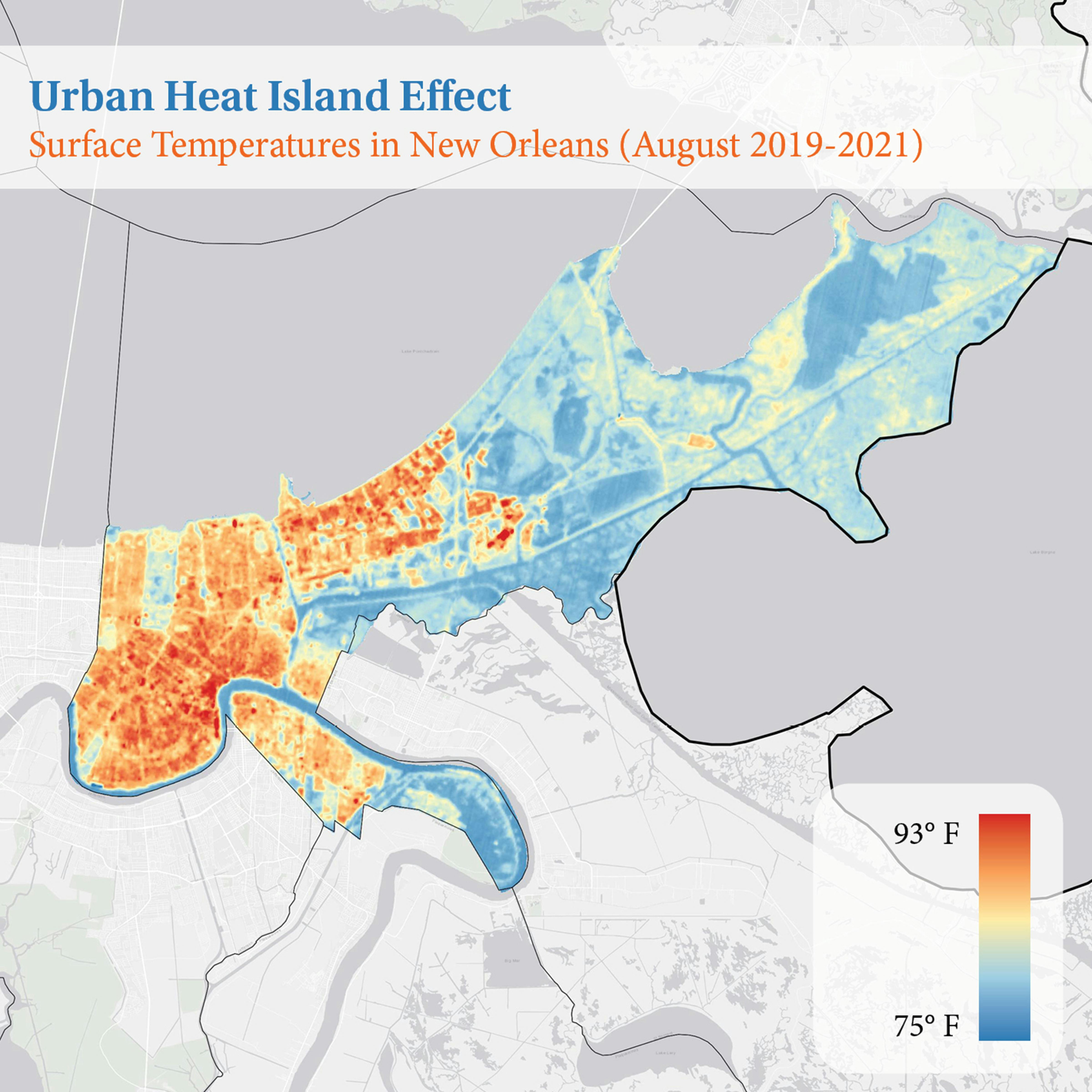
Extreme urban heat is a public health threat, especially for individuals and communities that are more vulnerable due to negative health, social, or economic factors.
Historical discriminatory housing practices like redlining, along with other socioeconomic factors, mean that communities of color are often in areas with fewer trees and parks and therefore are exposed to higher urban heat. Increasing urban heat island effect also escalates the burden of energy costs for cooling homes and buildings, so there are health and economic impacts to the lack of tree canopy in these neighborhoods.
New Orleans residents were deeply engaged during the planning phase to voice their hopes and concerns about neighborhood reforestation. City agencies, non-profits, and technical advisors were also core stakeholders during the yearlong engagement. Throughout the listening process, and from all stakeholder groups, equity emerged as the foundational measure of success for the plan.
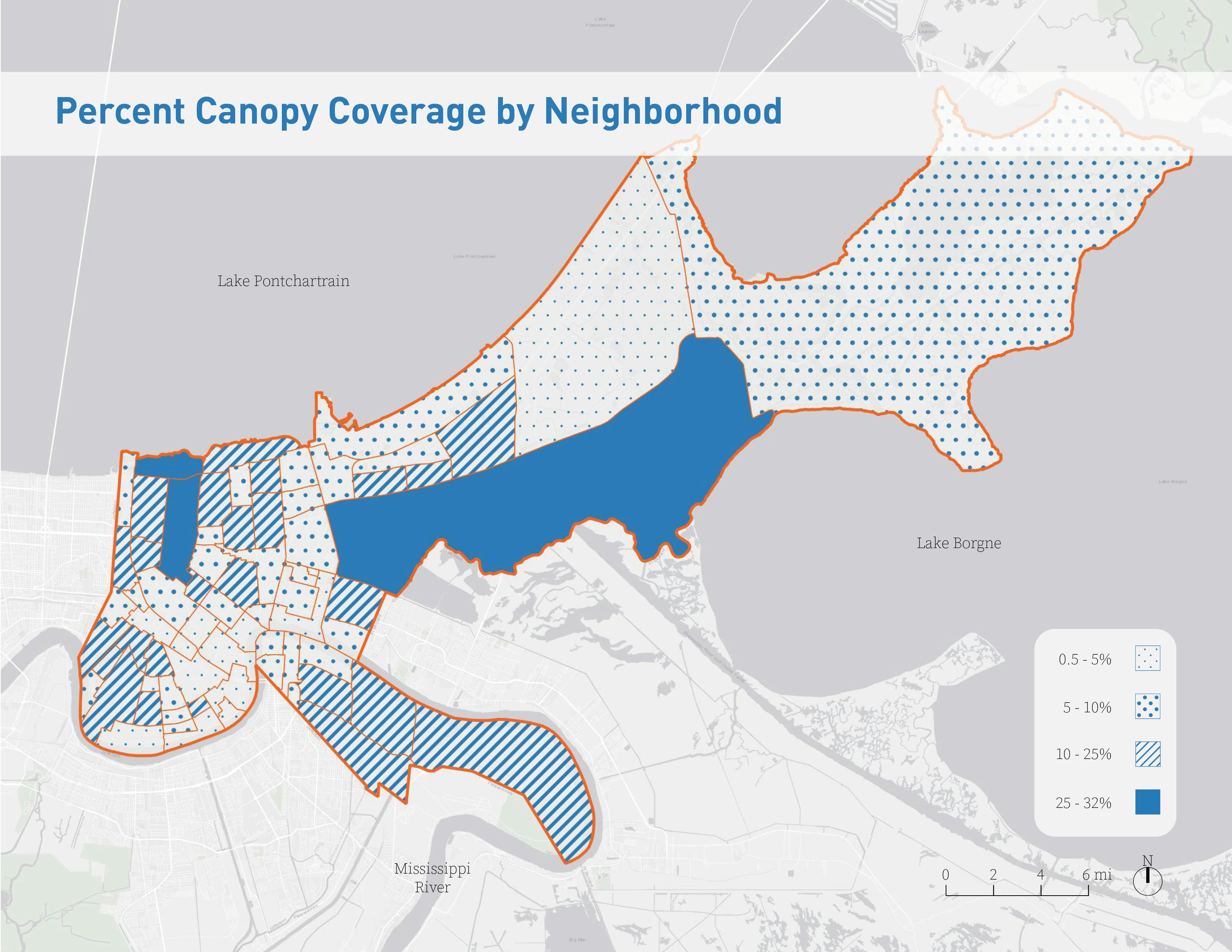
Over half of the 72 neighborhoods in New Orleans have less than 10% canopy coverage. The compact urban footprint in many historic areas contributes to this deficit and contributes to increasing socioeconomic challenges.
Rebuilding the urban forest in New Orleans will require protecting the existing trees in the city. It will also take a massive replanting effort—over many years—to replace the trees that are lost each year to natural causes, storms, and development. Most critical to the success of the plan, the reforestation of New Orleans must bring the benefits of trees to the neighborhoods that are the most vulnerable and help make the neighborhoods more livable
The goal for 2040 is to bring every neighborhood of New Orleans up to a 10% canopy coverage threshold.
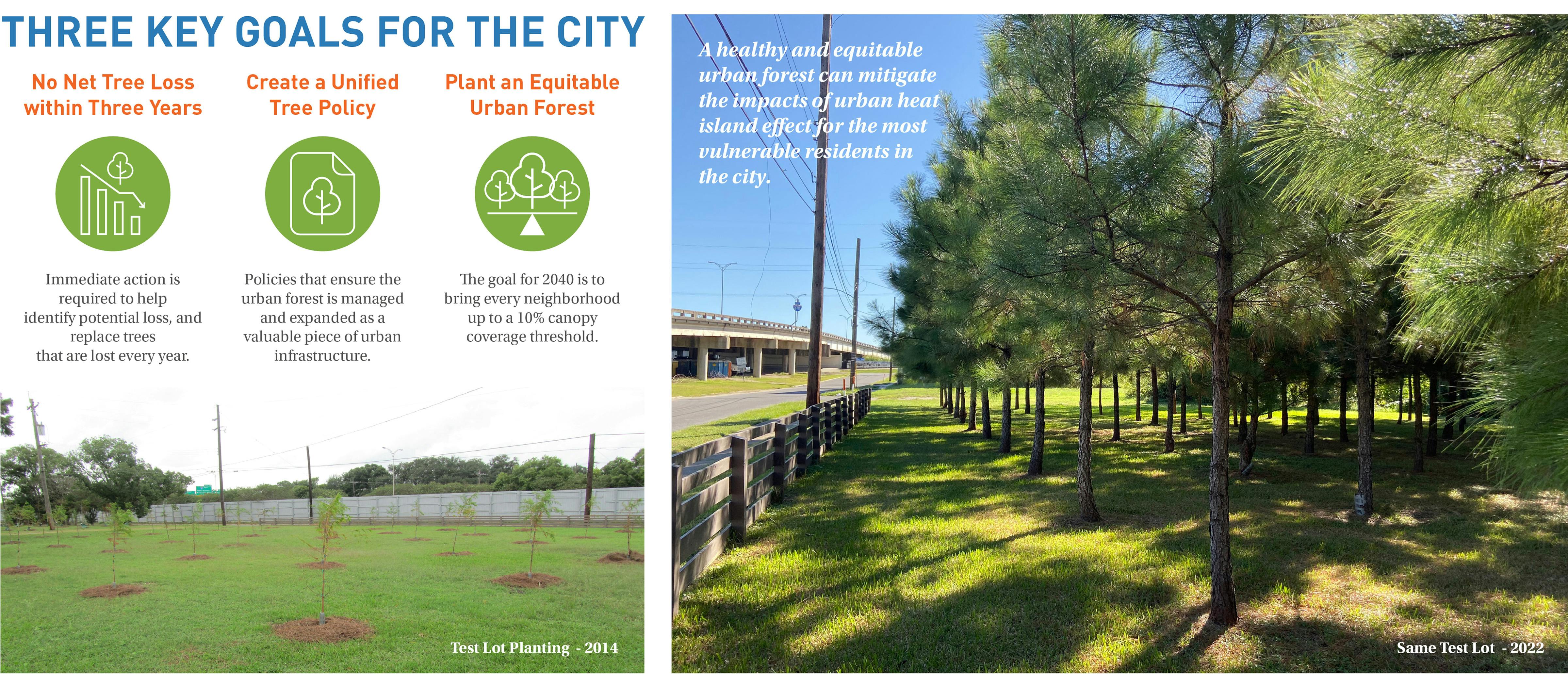
Through the New Orleans Reforestation Plan, SMM offers both a list of focused citywide goals as well as a phased pilot plan approach to comprehensive reforestation with equity as the guiding principle. Rather than planting trees sporadically across the city, the Plan recognizes that trees and the benefits they provide are not evenly spread across the city. The primary long-term goal of the plan is to restore 10% canopy coverage to all neighborhoods in our city by 2040. In preparation for this, a 5-year pilot program where tree canopies are established in five neighborhoods across Orleans Parish. These neighborhoods were chosen for their current tree deficit and environmental needs, and the goal is to plant every block of these areas.
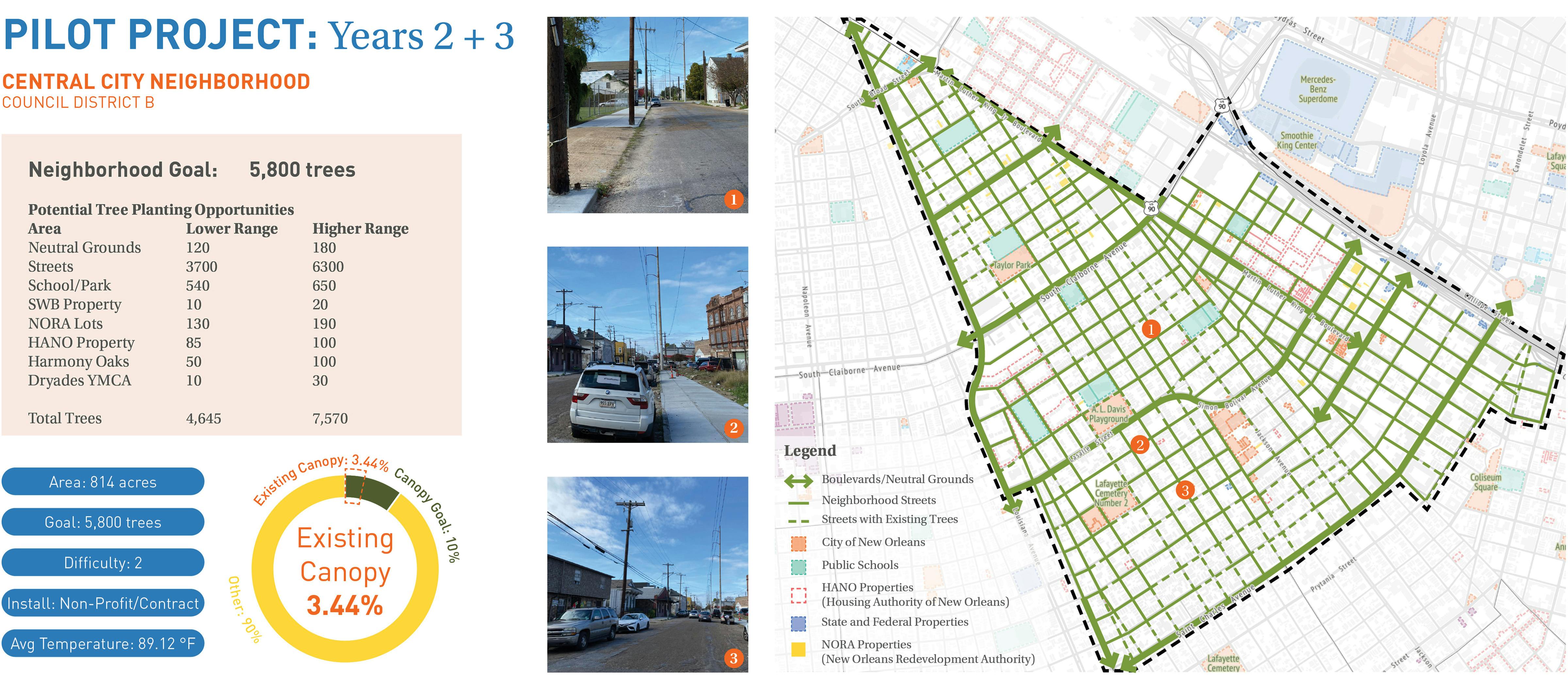
This initial focus will allow the City's collective capacity to grow into the challenge – to develop a unified tree policy, to ramp up the supply of native, water-loving trees, adequately fund the City’s tree planting and maintenance programs, blend together a reliable public and philanthropic funding stream, and build the operational capacity to plant 4,000 to 5,000 trees per year. Post 2030, the effort can then expand city-wide, with a goal of complete reforestation by 2050. At its heart, this plan is an effort of hope and optimism for the future generations of New Orleanians, and their ability to thrive on a hotter planet.
The New Orleans Reforestation Plan received the ASLA Honor Award in Analysis and Planning in 2023.
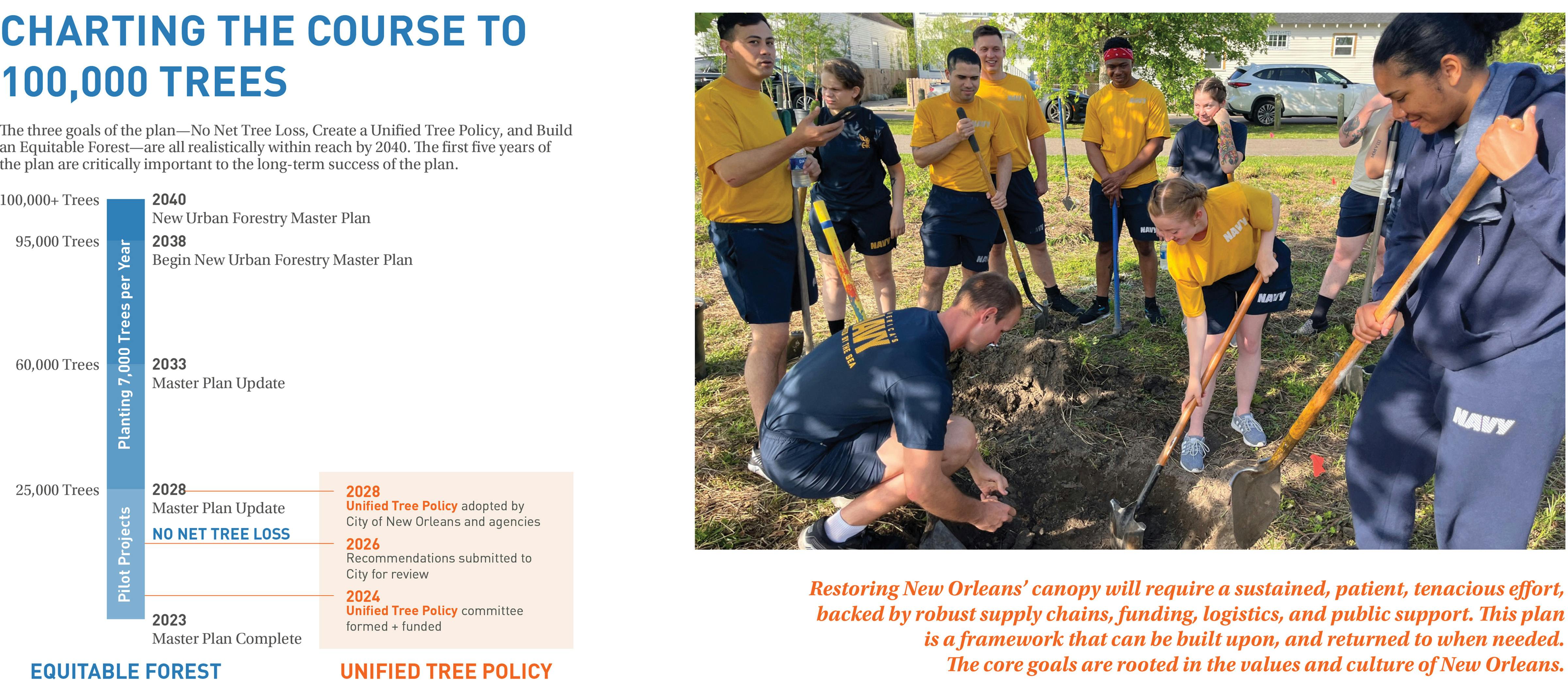
A path forward guided by the citywide goals can lead to equitable reforestation by 2040 with persistent and cohesive effort and community ownership.

